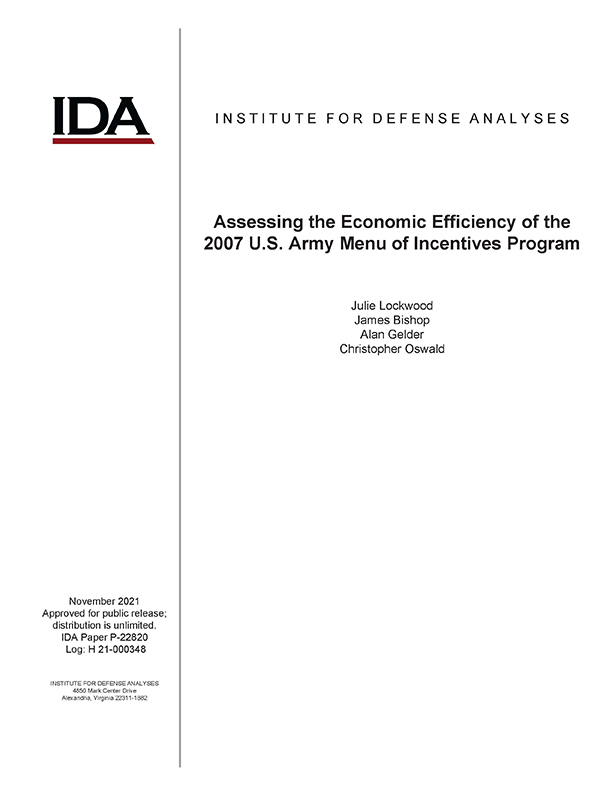Assessing the Economic Efficiency of the 2007 U.S. Army Menu of Incentives Program
November, 2021
IDA document: P-22820
FFRDC: Systems and Analyses Center
Type: Documents,
Talent Management
Division: Strategy, Forces and Resources Division
Authors:
IDA document: P-22820
FFRDC: Systems and Analyses Center
Type: Documents
Division: Strategy, Forces and Resources Division
Authors:
Authors
Julie A. Lockwood, James M. Bishop, Alan B. Gelder, Christopher D. Oswald
See more authors

